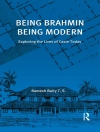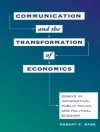Radiation detection is key to experimental nuclear physics as well as underpinning a wide range of applications in nuclear decommissioning, homeland security and medical imaging. This book presents the state-of-the-art in radiation detection of light and heavy ions, beta particles, gamma rays and neutrons. The underpinning physics of different detector technologies is presented, and their performance is compared and contrasted. Detector technology likely to be encountered in contemporary international laboratories is also emphasized. There is a strong focus on experimental design and mapping detector technology to the needs of a particular measurement problem. This book will be invaluable to Ph D students in experimental nuclear physics and nuclear technology, as well as undergraduate students encountering projects based on radiation detection for the first time.
Key Features
- Provides clear, concise descriptions of key detection techniques
- Describes detector types with “telescopic depth”, so readers can go as deep as they wish
- Covers real-world applications including short case studies in industry
Содержание
Preface
Part I Theory and context 1 Nuclear structure and radioactive decay 2 Interaction of ionising radiation with matter 3 Radioactive sources in the laboratory
Part II Detectors 4 The right detector for the job 5 Scintillator detectors for gamma-ray detection 6 Semiconductor detectors for gamma-ray detection 7 Applications of gamma-ray detection for society, medicine and other areas of science 8 Charged particle detection 9 Neutron detectors
Part III Electronics and data analysis 10 Readout electronics and data analysis 11 Closing remarks
Appendix A Further reading
Об авторе
David Jenkins is Head of the Nuclear Physics Group at the University of York, UK. He is also a Fellow of the Institute of Advanced Study, University of Strasbourg (USIAS) and an Extraordinary Professor of the University of Western Cape in South Africa. His research in experimental nuclear physics focusses on several topics such as nuclear astrophysics, clustering in nuclei and the study of proton-rich nuclei. In recent years, he has developed a strong strand of applications-related research with extensive industrial collaboration. He has led the development of bespoke radiation detectors for homeland security, nuclear decommissioning, borehole logging and medical applications.












